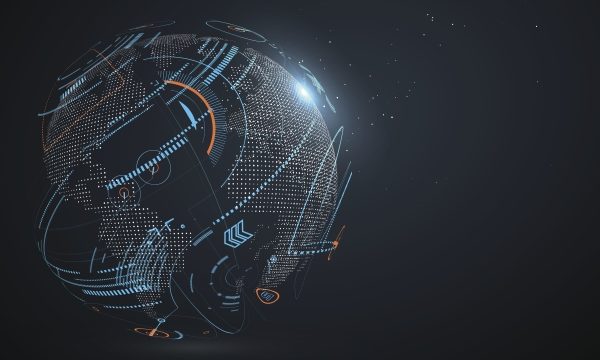/futuristic-globalization-interface--638644668-5af5f9d71d64040036e8e4c0.jpg)
Deepfake technology has undeniably reshaped the way we perceive visual media, blurring the line between reality and fiction. With its rapid advancement and growing accessibility, deepfakes have become a potent tool capable of altering faces, voices, and even entire narratives. In essence, this technology harnesses the power of artificial intelligence to generate hyper-realistic manipulations that can deceive even the most discerning eyes.
One cannot ignore the implications of deepfake technology on various aspects of society. From entertainment and politics to interpersonal relationships, deepfakes have the potential to disrupt trust and undermine the authenticity of digital content. As the sophistication of these manipulations continues to evolve, we find ourselves faced with a new era where the notion of truth can be easily fabricated and manipulated at the click of a button.
Moreover, the rise of deepfakes has raised concerns regarding privacy, consent, and ethical dilemmas. Legal frameworks struggle to keep up with the intricacies of this technology, as its malicious use poses significant risks to individuals and organizations alike. While deepfakes have undoubtedly showcased their potential for harm, it is equally important to explore the positive applications that could emerge from this rapidly advancing field.
As we delve into the intricacies and uncanny realities surrounding deepfake technology, it becomes imperative to understand both its implications and potential. This article seeks to shed light on the rise of deepfakes, enabling us to navigate the evolving digital landscape with awareness and discernment. By unraveling the multifaceted nature of this technology, we aim to uncover the intricate dance between artifice and authenticity in an increasingly interconnected world.
Understanding Deepfake Technology
Deepfake technology is a rapidly advancing field that has garnered significant attention in recent years. It refers to the use of artificial intelligence (AI) algorithms to manipulate or alter digital media, primarily videos and images, in a way that creates a realistic and often deceptive portrayal of events or individuals.
At the core of deepfake technology lies the concept of deep learning, a subset of machine learning that involves training neural networks to analyze and synthesize complex data. Deepfake algorithms utilize this powerful technique to generate hyper-realistic visual and auditory content by learning from vast amounts of existing data, such as images and videos.
One of the key aspects of deepfake technology is its ability to swap faces or voices in videos, allowing individuals to appear as someone else entirely, often with astonishing accuracy. This has led to concerns regarding the potential misuse of this technology, as it can be used to create convincing fake videos of people saying or doing things they never actually did.
The rise of deepfake technology has given rise to a host of ethical and security concerns. The potential for its misuse in various domains, such as politics, entertainment, and cybercrime, raises questions about the reliability of visual and auditory evidence. As deepfake technology continues to advance, it is crucial for society to understand its underlying mechanisms and the implications it holds for the future.
Implications of Deepfake Technology
Deepfake technology has raised significant concerns due to its potential implications in various domains. This emerging technology has the power to manipulate digital content, creating hyper-realistic fake videos and images. Such capabilities have sparked debates and discussions around the ethical, social, and legal consequences associated with deepfakes.
One major concern revolves around the impact of deepfakes on the spread of misinformation. With the ability to convincingly alter videos and images, malicious actors can exploit this technology to disseminate false narratives, misleading the public and eroding trust in information sources. This could have serious implications for journalism, politics, and public opinion, as deepfakes can be used to fabricate evidence, manipulate public figures’ statements, or generate misleading news content.
Another significant implication of deepfake technology lies in the realm of privacy and consent. Deepfake videos and images can be created using publicly available data, such as social media profiles or online images. This raises critical questions about the violation of individuals’ privacy rights and their control over their own likeness. Additionally, deepfakes can be used to maliciously defame or harass individuals by manipulating their images or putting them in compromising situations that never actually occurred.
The legal implications of deepfake technology are also a cause for concern. As the technology advances, it becomes increasingly challenging to distinguish between real and fake content. This poses significant challenges for the legal system, particularly in areas such as evidence authentication, intellectual property rights, and defamation laws. Developing effective legal frameworks to address the potential harms caused by deepfakes is crucial to ensure accountability and protect individuals from the malicious use of this technology.
https://faceswap.akool.com/
In conclusion, deepfake technology carries profound implications across different spheres. Its potential to spread misinformation, infringe on privacy, and challenge legal systems highlight the need for a holistic approach in addressing these concerns. As technology continues to evolve, it becomes imperative to strike a balance between innovation and safeguarding against the negative consequences of deepfakes.
Addressing the Challenges
Deepfake technology presents a number of challenges that societies must address in order to mitigate its impact. One pressing challenge is the potential for widespread misinformation and the erosion of trust in media and information sources. With deepfakes becoming increasingly realistic, it can be difficult to discern between what is real and what has been manipulated.
Another challenge is the violation of privacy that deepfake technology poses. As this technology continues to advance, the ease with which anyone can create sophisticated and convincing fake videos raises concerns about the misuse of personal data and the potential for targeted harassment or blackmail.
Furthermore, there is a pressing need for robust regulation and legal frameworks to govern the use of deepfakes. Currently, the law is struggling to keep up with the rapid advancements in this technology. Clear guidelines are necessary to define the boundaries of acceptable use and to hold accountable those who use deepfakes for malicious purposes.
In conclusion, addressing the challenges posed by deepfake technology requires a multi-faceted approach that involves improving media literacy, protecting individual privacy, and establishing effective legal frameworks. By working together to tackle these challenges, we can ensure that the rise of deepfake technology does not undermine the trust, security, and integrity of our digital world.



